Air-to-air missiles: forced evolution
The development of technology leads to the emergence of promising combat systems, which become almost impossible to resist with existing weapons. In particular, promising air-to-air missiles and laser self-defense systems of combat aircraft can radically change the format of a war in the air. We have previously reviewed the relevant technologies in the articles Laser weapons on combat aircraft. Is it possible to resist him? and Air-to-air anti-missile missiles... Electronic warfare (EW) complexes capable of effectively countering air-to-air and surface-to-air (W-E) missiles with a homing head will also be developed. Moreover, on combat aircraft of large dimensions, for example, on such as promising American bomber B-21 Raider, these complexes can be comparable in efficiency with electronic warfare equipment deployed on specialized aircraft.
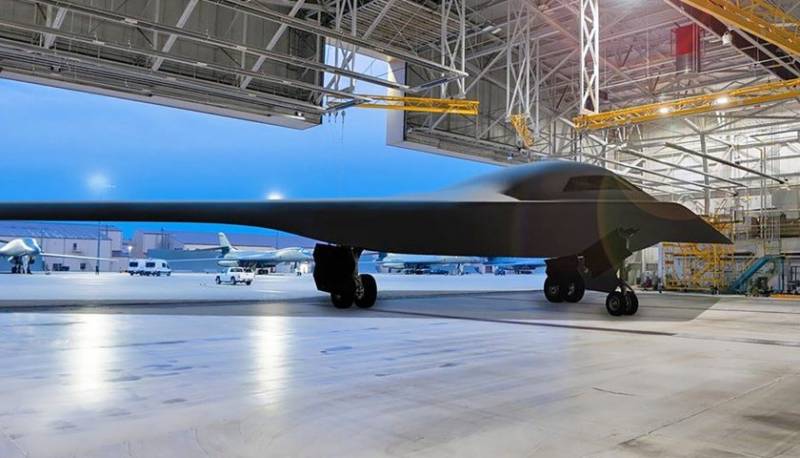
The promising American B-21 Raider bomber can get the most advanced self-defense systems ever installed on combat aircraft
Naturally, the emergence of advanced defense systems for combat aircraft cannot remain unanswered, and a corresponding evolution of air-to-air missiles will be required, capable of overcoming such protection with an acceptable probability.
This task will be quite difficult, since promising self-defense systems complement each other, making it difficult to develop effective countermeasures. For example, the emergence of laser self-defense systems will require equipping missiles with anti-laser protection, which, contrary to popular belief, cannot be made of foil or silver paint, and will be quite heavy and cumbersome. In turn, an increase in the mass and dimensions of the V-V missiles will make them easier targets for V-V antimissiles, which do not require anti-laser protection.
Thus, in order to endow promising air-to-air missiles with the ability to hit promising combat aircraft equipped with anti-missile missiles, laser self-defense systems and electronic warfare means, it will be necessary to implement a whole range of measures, which we will consider in this article.
Engines
The engine is the heart of the B-B rockets It is the parameters of the engine that determine the range and speed of the missile, the maximum allowable mass of the seeker (GOS) and the mass of the warhead (warhead). Also, the power of the engine is one of the factors that determine the maneuverability of the rocket.
Currently, the main propulsion systems for air-to-air missiles are still solid propellant rocket engines (solid propellant rocket motors). A promising solution is a ramjet engine (ramjet) - this is installed on the latest European MBDA Meteor missile.
According to unconfirmed reports, within the framework of the classified "black" program of the US Department of Defense, an air-to-air missile with a ramjet engine was developed, and even used during the operation in the Persian Gulf, with its help at least one Iraqi plane was shot down.
The use of a ramjet engine makes it possible to increase the firing range, while a missile of comparable range with solid propellants will have large dimensions or worse energy characteristics, which will negatively affect its ability to intensively maneuver. In turn, the ramjet engine may also have limitations on the intensity of maneuvering due to the limitations on the angles of attack and slip required for the correct operation of the ramjet engine.
Thus, promising V-B missiles in any case will include solid propellants to achieve the minimum speed required to launch a ramjet, and the ramjet itself. It is possible that the V-B missiles will become two-stage - the first stage will include solid propellants for acceleration and ramjet, and the second stage will include only solid propellants to ensure intensive maneuvers in the final section, when approaching the target, including for evading air-to-air missiles. air and reducing the effectiveness of enemy self-defense laser systems.
Instead of solid fuel used in solid propellants, gel-like or pasty fuel (RPM) can be developed. Such engines are more difficult to design and manufacture, but will provide better energy characteristics compared to solid fuel, as well as the potential for throttling of thrust and the ability to turn on / off the RPM.
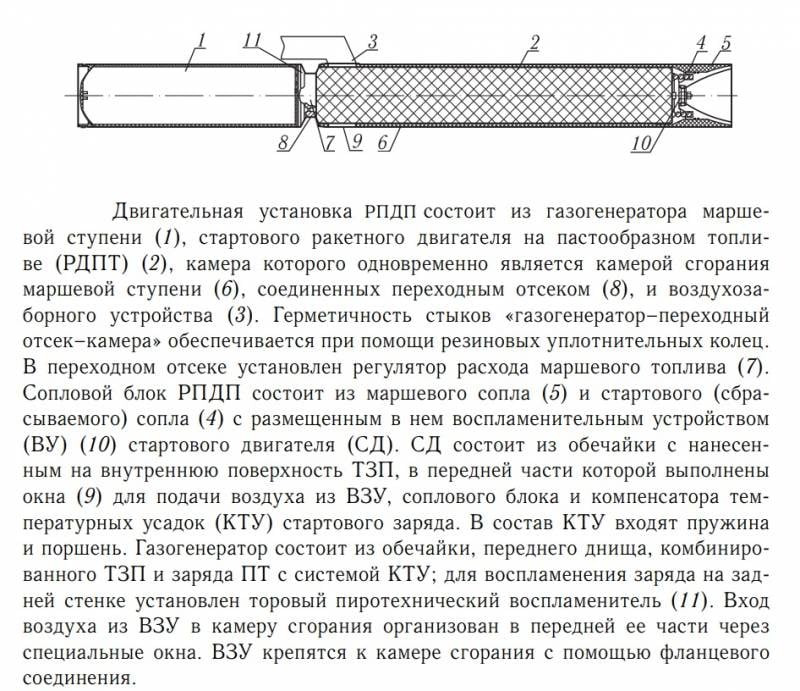
Diagram of a rocket engine running on pasty fuel (from the book Direct-flow rocket engines running on solid and pasty fuels. Basics of design and experimental development)
Super maneuverability
In promising air-to-air missiles, the possibility of intensive maneuvering will be required not only to defeat highly maneuverable targets, but also to perform intensive maneuvers that prevent the defeat of V-V anti-missiles and reduce the effectiveness of enemy laser self-defense systems.
To increase the maneuverability of V-V missiles, thrust vector control engines (VVT) and / or transverse control engines as part of a gas-dynamic control belt can be used.
The use of UHT or a gas-dynamic control belt will allow promising V-V missiles to both increase the efficiency of overcoming promising enemy self-defense systems and ensure that the target is hit with a direct hit (hit-to-kill).
It is necessary to make a remark - the ability to maneuver intensively, even with sufficient energy of a V-B rocket provided by a ramjet or RPMT, will not provide effective evasion from enemy anti-missiles - it will be necessary to ensure the detection of incoming anti-missiles, since intensive maneuvering throughout the missile flight B-B is impossible.
Reduced visibility
In order for an anti-missile or laser self-defense system of a combat aircraft to attack incoming air-to-air missiles, they must be detected in advance. Modern missile attack warning systems are capable of doing this with high efficiency, including determining the trajectory of incoming air-to-air or west-to-air missiles.
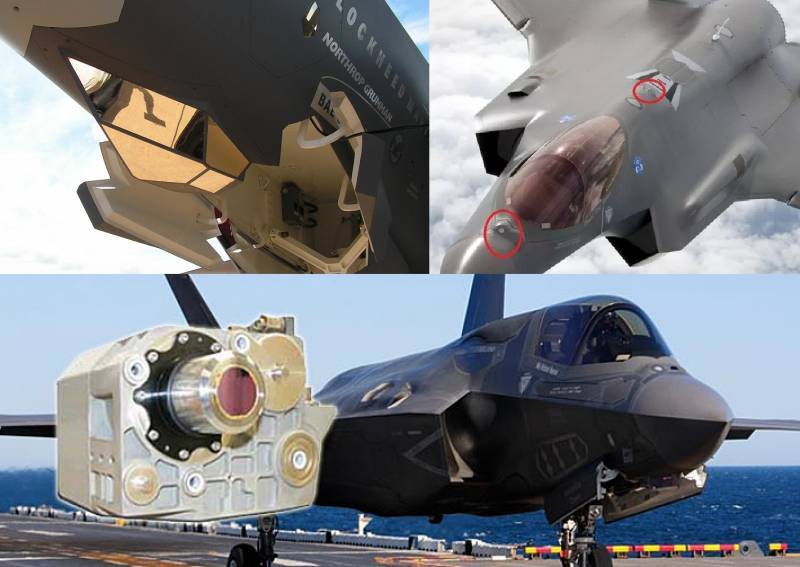
Optical-location systems (OLS) of the F-35 fighter allow high-efficiency detection of V-V and Z-V missiles, in fact, allowing the pilot to see an approaching missile
The use of measures to reduce the visibility of air-to-air missiles will significantly reduce the range of their detection by missile attack warning systems.
The development of missiles with a reduced signature has already been carried out. In particular, in the 80s of the twentieth century, the United States developed and brought to the test stage a stealthy air-to-air missile Have Dash / Have Dash II. One of the variants of the Have Dash rocket involved the use of a ramjet, which, in turn, was allegedly used in the aforementioned B-B rocket tested in the Persian Gulf.
The Have Dash rocket has a body made of a radio-absorbing composite based on graphite of a characteristic faceted shape with a triangular or trapezoidal cross-section. In the bow there was a radio-transparent / IR-transparent fairing, under which there was a dual-mode seeker with active radar and passive infrared guidance channels, an inertial guidance system (INS).
At the time of development, the US Air Force did not need stealth missiles, so their further development was suspended, and possibly classified and transferred to the status of "black" programs. In any case, the developments on Have Dash missiles can and will be used in promising projects.
In promising V-V missiles, measures can be taken to reduce the signature both in radar (RL) and infrared (IR) wavelength ranges. The engine torch can be partially shielded by structural elements, the body is made of radio-absorbing composite materials, taking into account the optimal re-reflection of radar radiation.
Reducing the radar signature of promising V-V missiles will be hampered by the need to simultaneously provide them with effective anti-laser protection.
Anti-laser protection
In the next decade, laser weapon can become an integral attribute of combat aircraft and helicopters. At the first stage, its capabilities will make it possible to ensure the defeat of the optical seeker of the V-V and Z-V missiles, and in the future, as the power increases, the V-V and Z-V missiles themselves.
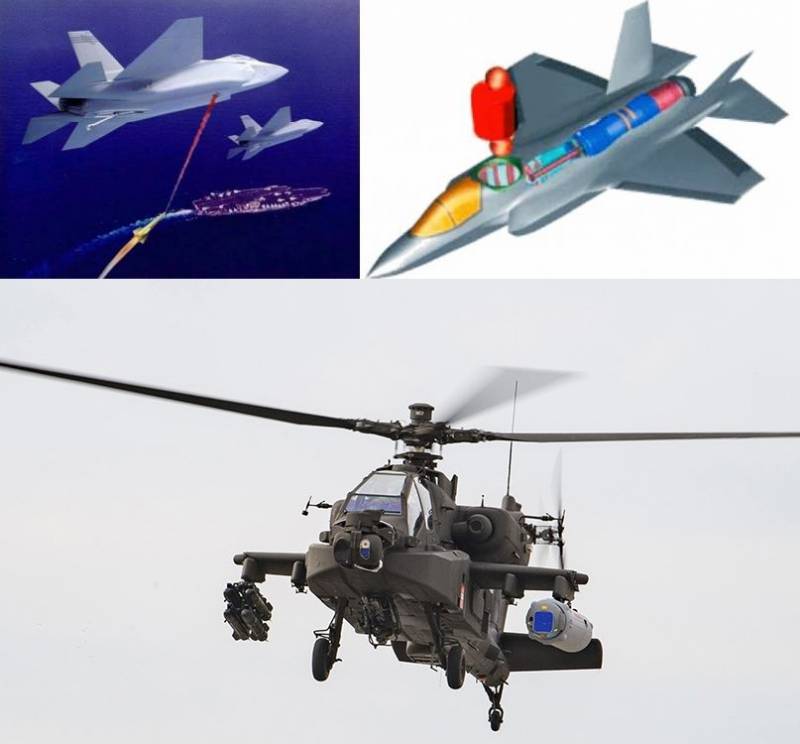
Laser weapons with a capacity of 15-150 kilowatts can be integrated into the glider of promising aircraft or placed in a suspended container
A distinctive feature of laser weapons is the ability to almost instantly redirect the beam from one target to another. At high altitude and flight speed, it is impossible to provide protection with smoke screens, the optical transparency of the atmosphere is high.
On the side of the V-V missile is its high speed - the effective range of a laser self-defense weapon is unlikely to exceed 10-15 kilometers, the V-V missile will cover this distance in 5-10 seconds. It can be assumed that a 150 kW laser will take 2-3 seconds to hit an unprotected V-V missile, that is, a self-defense laser complex can repel the impact of two or three such missiles.
Larger aircraft can gain an advantage, since several laser self-defense systems can be placed on them, and their power can be higher, more anti-missiles in the weapon bays, more powerful radar and electronic warfare equipment. The issue of the prospects for increasing the dimension of combat aircraft and changing the tactics of their use was considered in the articles 2050 year combat aircraft concept and weapons based on new physical principles и Where will the combat aircraft go: will it press down on the ground or gain altitude??.
To overcome promising laser self-defense systems, it will be necessary to organize a simultaneous approach to the target of a group of V-B missiles or to increase their protection against laser weapons.
The protection of ammunition from powerful laser radiation was discussed in the article Resist the Light: Protection from Laser Weapons.
Two directions can be distinguished. The first is the use of ablative protection (from the Latin ablatio - taking away, carrying away the mass) - the effect of which is based on the removal of matter from the surface of the protected object by a stream of hot gas and / or on the restructuring of the boundary layer, which together significantly reduces the heat transfer to the protected surface.
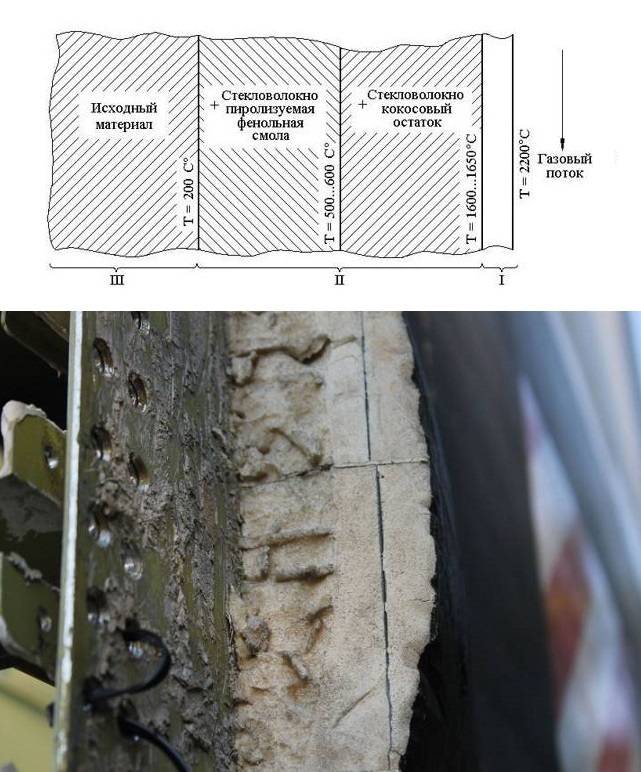
Cutaway diagram of ablative protection and ablation protection of the spacecraft "Buran"
The second direction is covering the body with several protective layers of refractory materials, for example, a ceramic coating over a carbon-carbon composite matrix. Moreover, the upper layer must have high thermal conductivity in order to maximize the distribution of heat from laser heating over the surface of the case, and the inner layer must have low thermal conductivity in order to protect the internal components from overheating.
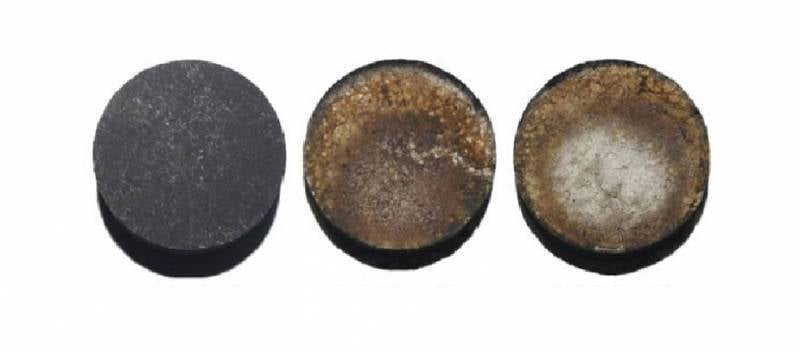
Ceramic coating Zr0.8Ti0.2C0.74B0.26, developed by scientists from the Royce Institute at the University of Manchester (UK) and Central South University (China) - material on the left before testing, in the center and right - after two minutes of testing at a temperature of 2000 ° C and 2500 ° C, in the center of the right sample there is a white area where the temperature reached 3000 ° C
The main question is what thickness and mass should be the coating of the V-B rocket in order to withstand the impact of a laser with a power of 50-150 kW or more, and how it will affect the maneuverable and dynamic characteristics of the rocket. It also has to be combined with stealth requirements.
An equally difficult task is to protect the missile seeker. The applicability of V-V missiles with IR seeker against aircraft equipped with laser self-defense systems is in question.... It is unlikely that thermo-optical passive shutters will be able to withstand the impact of laser radiation with a power of tens to hundreds of kilowatts, and mechanical shutters do not provide the required closing speed to protect sensitive elements.
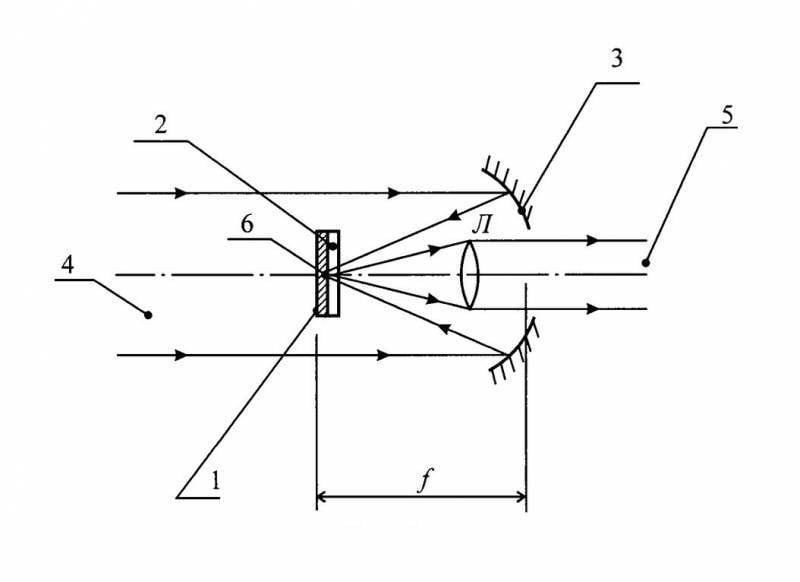
Images from RF patent No. 2509323 for an optical passive shutter: 1 - metal mirror film melting and evaporating under the action of radiation, 2 - transparent substrate, 3 - parabolic mirror, 4 and 5 - input and output apertures of an optical device with a shutter, 6 - region c film 1 exposed to laser heating, g is the focal length of the parabolic mirror, L is the lens
Perhaps it will be possible to achieve the operation of the IR seeker in the "instant view" mode, when the homing head is almost always closed with a tungsten diaphragm, and opens only for a short period of time to obtain an image of the target - at the moment when there is no laser radiation (its presence must be determined by a special sensor) ...
To ensure the operation of an active radar homing head (ARLGSN), protective materials must be transparent in the appropriate wavelength range.
EMI protection
To destroy air-to-air missiles at a great distance, the enemy can potentially use V-V anti-missiles with a warhead that generates a powerful electromagnetic pulse (EMP ammunition). One EMP ammunition can potentially hit several enemy V-B missiles at once.
To reduce the impact of EMP of ammunition, electronic components can be shielded by feromagnetic materials, for example, something like "ferrite cloth" with high absorbing properties, with a specific gravity of only 0,2 kg / m2, developed by the Russian company "Ferrit-Domain".
As part of electronic components, circuit breakers can be used in the event of strong induction currents - zener diodes and varistors, and ARLGSN can be made on the basis of EMI-resistant low-temperature co-fired ceramics (Low Temperature Co-Fired Ceramic - LTCC).
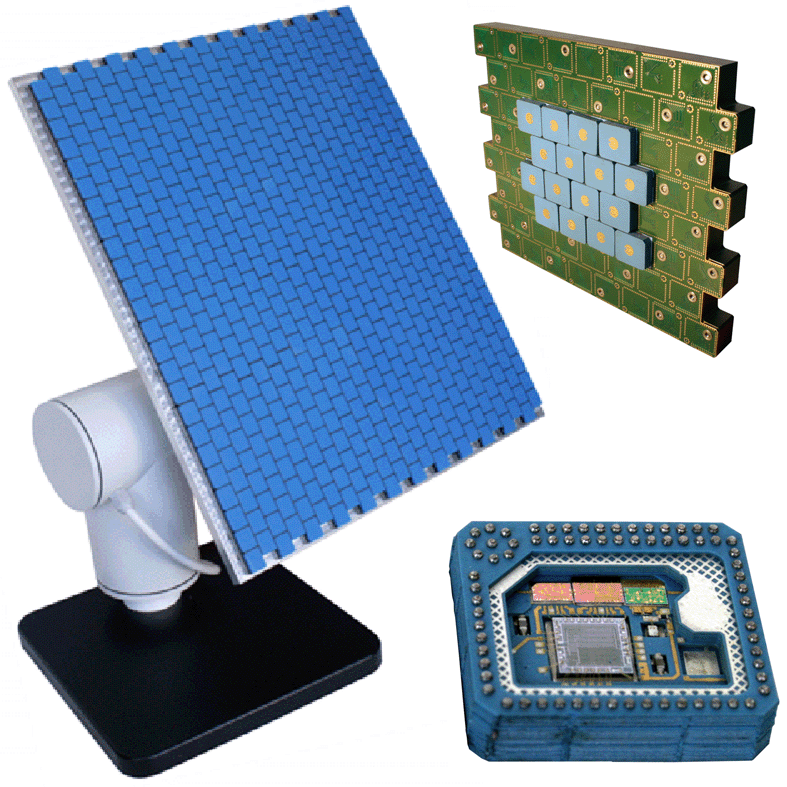
Planar active phased antenna array (APAR) using LTCC-ceramics technology developed by JSC "NIIPP", Tomsk
Salvo application
One of the ways to overcome the protection of promising combat aircraft is the massive use of B-B missiles, for example, several dozen missiles in a salvo. The newest F-15EX fighter can carry up to 22 AIM-120 missiles or up to 44 small-sized CUDA missiles, the Russian Su-35S fighter - 10-14 V-V missiles (it is possible that their number can be increased due to the use of double suspension pylons or the use of reduced-size V-V missiles). The fifth generation fighter Su-57 also has 14 suspension points (including external ones). The capabilities of other fifth-generation fighters in this regard are more modest.
The question is how effective such tactics will be when simultaneously countering electronic warfare, anti-missiles with electromagnetic warheads, medium-range anti-missiles of the CUDA type, small-sized anti-missiles such as MSDM / MHTK / HKAMS and laser on-board self-defense systems. There is a possibility that "classic" unprotected air-to-air missiles may become ineffective due to their high vulnerability to promising self-defense systems for combat aircraft.
UAV - carrier of V-V missiles
It is possible to increase the number of V-V missiles in a salvo and bring them closer to the attacked aircraft by using an inexpensive, inconspicuous unmanned aerial vehicle (UAV) in conjunction with a combat aircraft. Such UAVs are currently being actively developed in the interests of the US Air Force.
Companies General Atomics and Lockheed Martin, commissioned by the Office of Advanced Research Projects of the US Department of Defense DARPA, are developing an unobtrusive airborne UAV with the ability to use air-to-air weapons under the LongShot program. When attacking, such UAVs can move forward of the attacking fighter, increasing the number of B-B missiles in a salvo, allowing them to conserve energy for the final section. Low radar and infrared visibility of the UAV carrier will delay the moment of activation of the onboard self-defense systems of the attacked aircraft.
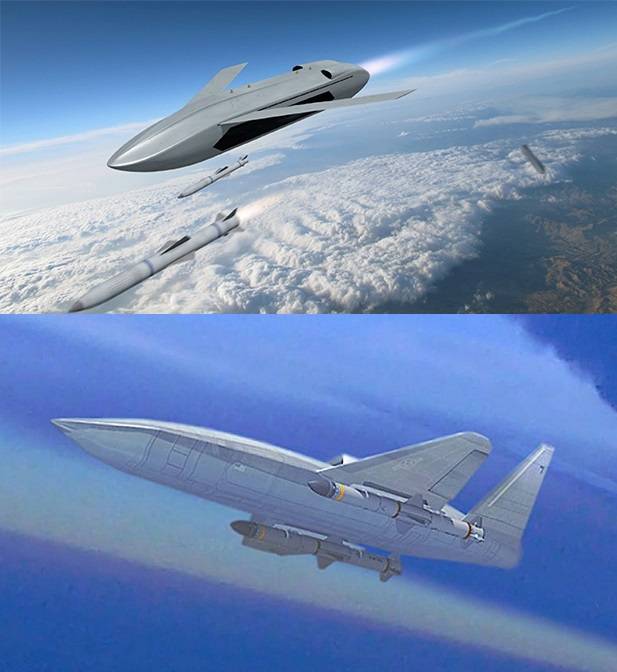
LongShot UAV concepts
To determine the moment of activation of the airborne defense systems of the attacked aircraft - the launch of V-V anti-missiles, the inclusion of electronic warfare means, UAVs can be equipped with specialized equipment. An option may be considered when the UAV carrier will perform the role of "kamikaze", following the V-V missiles, covering them with electronic warfare means, and relaying external target designation from the carrier aircraft.
Such UAVs do not have to be airborne, but this will increase their size and cost. In turn, airborne deployment will require an increase in the dimensions and carrying capacity of the carrier, which we have already talked about - right up to the appearance of a kind of "air aircraft carriers", which we considered in the article Combat "Gremlins" US Air Force: the revival of the concept of aircraft carrier aircraft.
Riding hypersound
An even more radical solution could be the creation of heavy V-V missiles with submunitions in the form of small-sized V-V missiles instead of a monoblock warhead. They can be equipped with a ramjet engine that provides a high supersonic or even hypersonic flight speed over most of the trajectory.
Anti-aircraft guided missiles (SAMs) with submunitions with a caliber of 30 to 55 mm and a length of 400 to 800 mm were created in Nazi Germany, however, then they were unguided high-explosive fragmentation (HE) ammunition.
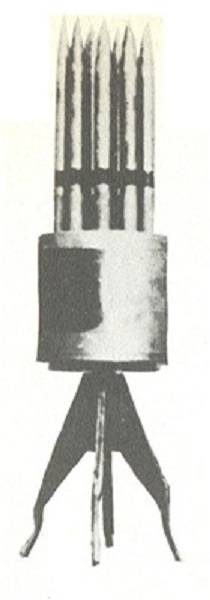
Warhead SAM with unguided HE submunitions
In Russia, promising air-to-air missiles and heavy V-V missiles are being developed for the MiG-31 and promising MiG-41 interceptors, in which the advanced K-77M air-to-air missiles, which are the development of RVV-SD missiles, will be used as submunitions. It is assumed that they will be used to destroy hypersonic targets - the presence of several individually homing submunitions will increase the likelihood of hitting complex high-speed targets.
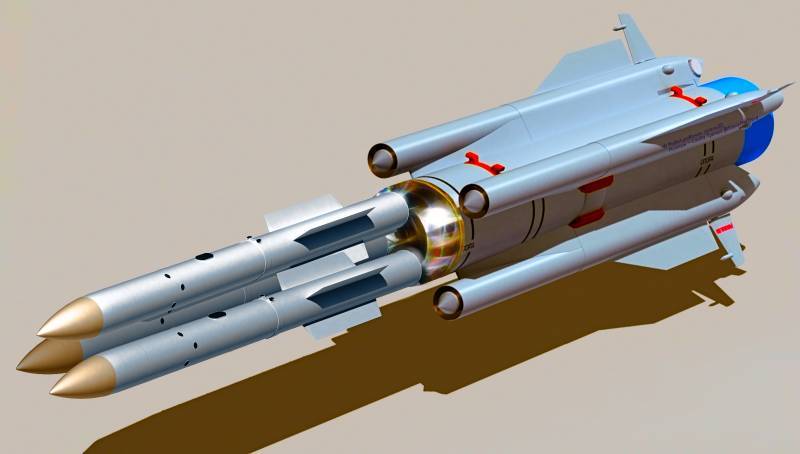
The concept of a promising missile with several individual targeting submunitions
However, it can be assumed that the promising heavy V-B missile will be more in demand precisely for the destruction of combat aircraft equipped with promising self-defense systems.
As in the case of UAV carriers, the first stage of the V-B missile, the carrier of submunitions, can also be equipped with means of detecting an attack by anti-missiles, detecting the use of electronic warfare equipment by the enemy and its own electronic warfare equipment, and equipment for relaying target designation from the carrier to submunitions.
False targets
One of the elements of equipping UAV carriers and an addition to the guided submunitions of promising heavy V-V missiles can become false targets. There are certain problems that complicate their use - combat operations in the air are conducted at high speeds with intensive maneuvering, so a false target cannot be made with a simple "blank". At a minimum, it should include an engine with a fuel supply, a simple INS and controls, possibly a receiver for receiving information from an external target designation source.
It would seem - what is the point then, in fact it is almost a V-V rocket? However, the absence of a warhead, transverse control and / or UHT engines, abandonment of technologies to reduce visibility, and most importantly - from an expensive guidance system, will make a false target several times cheaper than a "real" V-B missile and several times smaller in size.
That is, instead of one B-B missile, 2-4 decoys can be placed, which can approximately maintain the course and speed relative to real B-B missiles. They can be equipped with corner reflectors or Luneberg lenses to obtain an effective scattering surface (EPR) equivalent to that of "real" VB rockets.
An additional similarity between decoys and real air-to-air missiles should be provided by an intelligent attack algorithm.
Intelligent attack algorithm
The most important element that ensures the effectiveness of an attack with promising air-to-air missiles should be an intelligent algorithm that ensures the interaction of the carrier aircraft, intermediate carriers - a hypersonic booster block or UAV, air-to-air submunitions and decoys.
It is necessary to provide an attack on the target from the optimal direction, to synchronize false targets and V-B submunitions according to the arrival time (the flight speed can be changed by turning on / off or throttling of promising rocket engines).
For example, after separating B-B submunitions and false targets, if there is a control channel on the latter, decoys can perform simple maneuvers together with B-B submunitions. In the absence of a control channel for false targets, they can move in the same direction with the submunitions for some time, even when the target changes the direction of flight, making it difficult for V-B interceptors to determine where the real target is, and where the false one, up to the moment when the optimal turn time for hitting a target from a minimum distance or destroying a control channel through a UAV or an upper stage.
The enemy will try to drown out the control of the "flock" of airborne submunitions and decoys by means of electronic warfare. To counteract this, the option of using one-way optical communication "carrier - UAV / upper stage" and "UAV / upper stage - V-V submunitions / decoys" can be considered.
Conclusions
The appearance on promising combat aircraft of effective air-to-air missile systems, laser self-defense systems, electronic warfare equipment, will require the development of promising new generation air-to-air missiles.
In turn, the emergence of promising airborne self-defense systems will have a significant impact on combat Aviation - it can go both along the path of creating distributed systems - manned aircraft and UAVs of various types, connected into a single network, and along the path of increasing the dimensions of combat aircraft and a corresponding increase in the weapons placed on them, self-defense complexes, electronic warfare equipment, increasing the power and dimensions of the radar ... Also, both approaches can be combined.
Promising combat aircraft can become a kind of equivalent of surface ships - frigates and destroyers, which do not dodge, but repel the blow. Accordingly, the means of attack must evolve taking this factor into account.
Regardless of the chosen approach to the development of combat aviation, one thing can be said with certainty - the cost of conducting a war in the air will increase significantly.
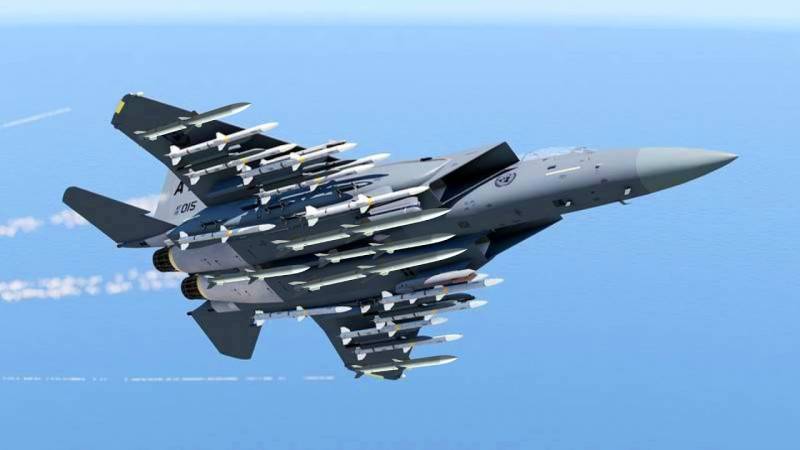
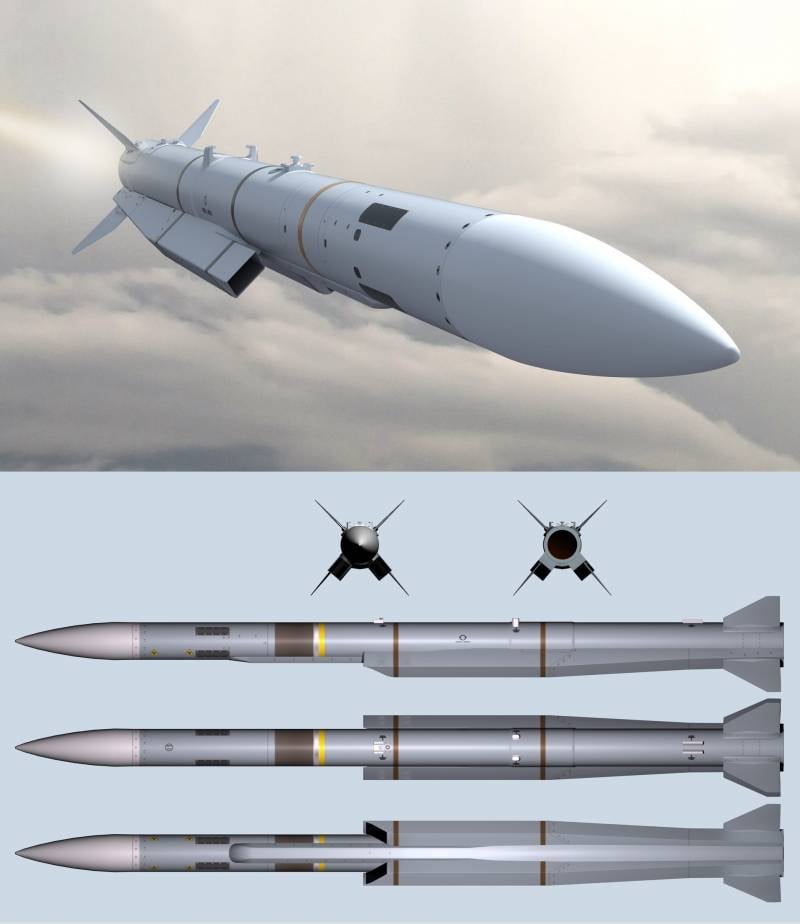
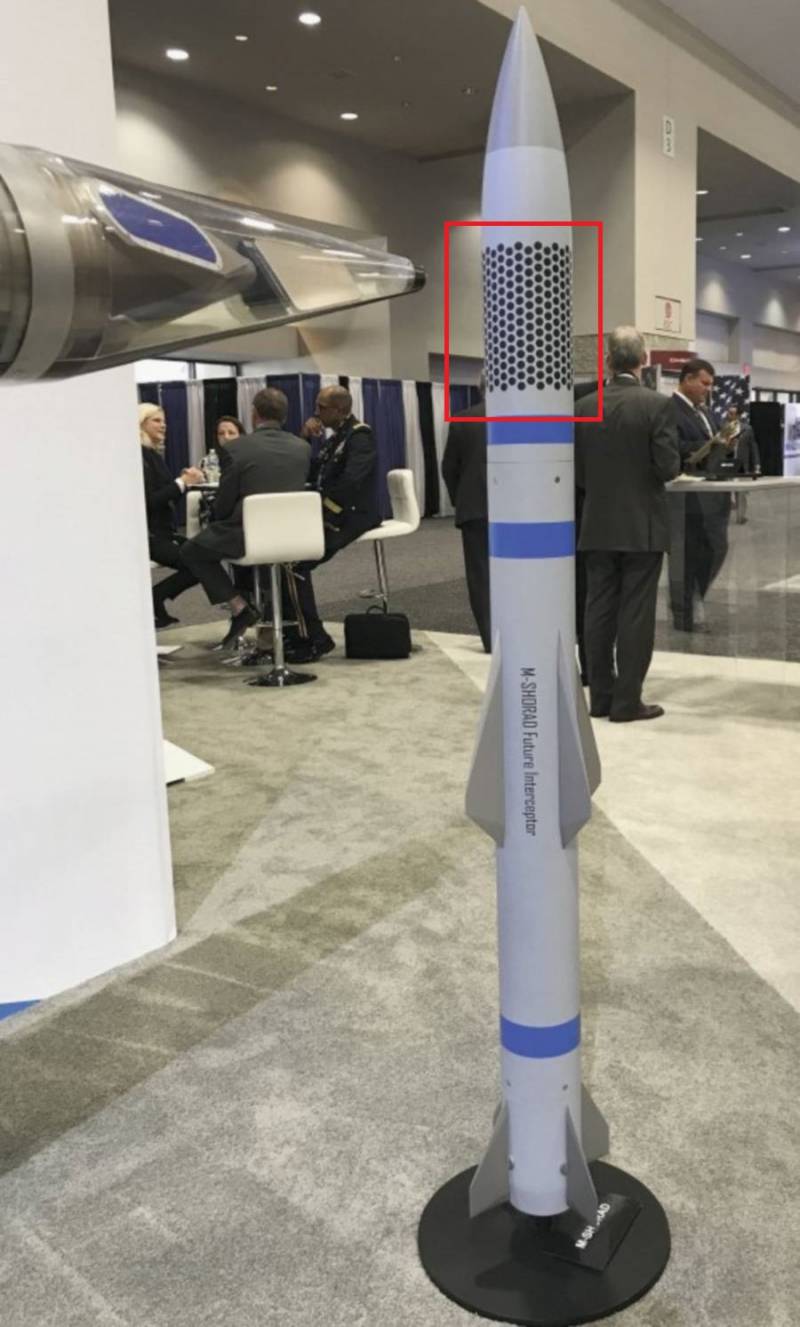
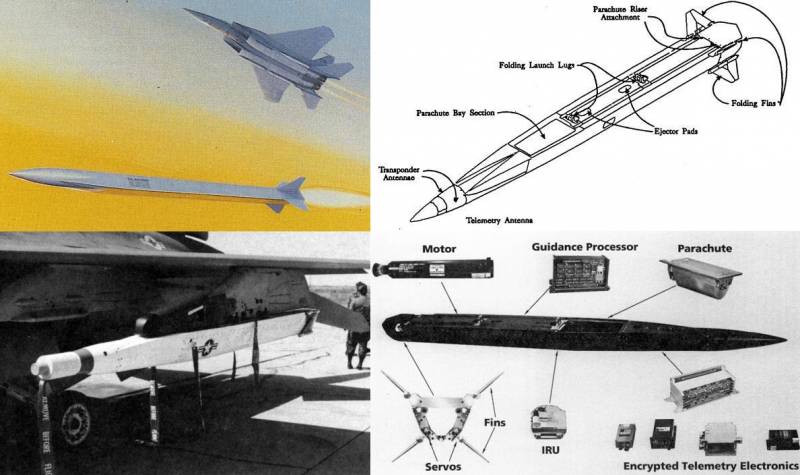
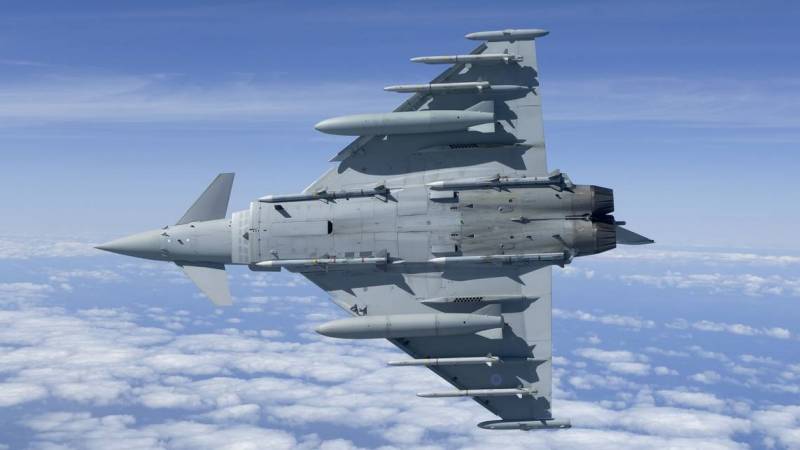
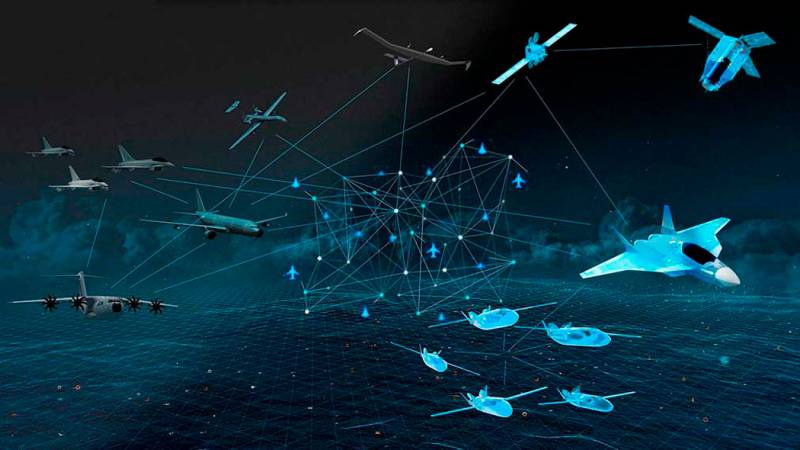
Information